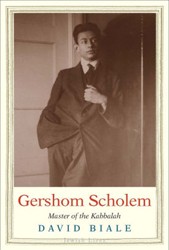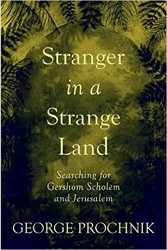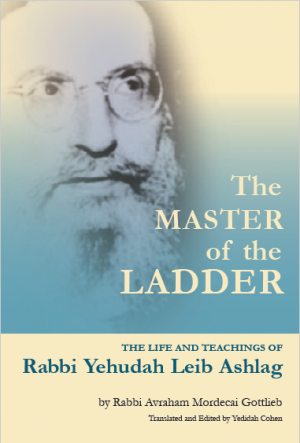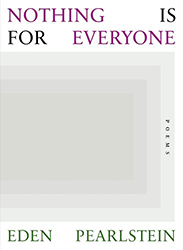“I will present myself … as a Jew, as an Israeli, as a Berliner, and as a scholar of Kabbalah,” wrote Gershom Scholem, accepting an invitation to lecture in 1981. Today, some forty years later, Scholem remains a significant force in Jewish thought, with four biographies in English published since 2017 – two of the most recent being Gershom Scholem by David Biale and From Berlin to Jerusalem and Back by Noam Zadoff.
Scholem founded the modern academic discipline of kabbalah and Jewish mysticism, subjects that had not been considered worthy of study before his groundbreaking work. Through his teaching at Hebrew University, his lectures (in three languages), and extensive writings, Scholem demonstrated that these esoteric texts were a vital part of Judaism and its history, casting light on what many deemed the dark and irrational side of the religion. Embracing these mythic and demonic elements, to use Scholem’s phrase, broke open the confines of Judaism, broadening its scope and restoring an immediacy that the rationality and laws of contemporary Judaism had sapped.
David Biale, Emanuel Ringelblum Distinguished Professor of Jewish History at the University of California, Davis, draws extensively on Scholem’s letters and diaries to reveal his personal life. Gerhard Arthur Scholem was born into a secular German Jewish family in 1897. After his bar mitzvah in a Reform synagogue, he practiced Orthodoxy for a while, turning his back on his family’s assimilated life. As a teenager and young man, Scholem was almost ferociously engaged in Jewish activity — he learned both classic and modern Hebrew, mastered a broad range of Jewish texts, and participated in German-Jewish youth groups that looked to cultural Zionism to revive Jewish life. He started signing some of his letters “Gershom.” During this period, he also came under the influence of Martin Buber and began his friendship with S. Y. Agnon and other leading Jewish thinkers. Soon, he started reading about Jewish mysticism; for his doctoral dissertation, he translated and annotated an obscure twelfth-century kabbalistic work. These years of youthful study, activism, and tumult — Scholem had a contentious side, often disagreeing with his youth group fellows and openly criticizing Buber — laid the foundation for his career. Soon after arriving in Palestine in 1923, Scholem began working at what is now called the National Library of Israel and, upon the opening of Hebrew University, won an appointment at its Institute of Jewish Studies. For the next forty years that position was his base for research and teaching.
Zadoff, assistant professor of Jewish Studies and History at the University of Indiana, begins his intellectual biography in 1923, the year Scholem made aliyah. Zadoff’s subtitle plays on the title of Scholem’s autobiography From Berlin to Jerusalem (1980); the pull of these two cities animates Zadoff’s biography.
After World War II, Scholem was assigned to a mission to examine and salvage Jewish books and manuscripts stolen during the war. Because most of the original owners of the materials had died, the mission aimed to relocate the books and manuscripts in what is now the National Library of Israel. The trip had a great impact on Scholem; it brought him face to face with the Holocaust. The devastation ultimately thrust him into depression. But he also met the psychologist Carl Gustav Jung, who was suspected of Nazi sympathies, and in this and his subsequent relationships with Germans and the German government, Scholem often based his decisions on participation on their affiliation with Nazism. Leo Baeck, the prominent German rabbi and survivor of Theresienstadt, assured Scholem of Jung’s remorse, and thus began Scholem’s long association with Eranos, an annual scholarly discussion group in which Jung played an important part. He resumed scholarly writing in German and developed active relationships with German scholars and institutions with the thought, possibly, of establishing a dialogue between Germans and Jews. Zadoff suggests that underlying his postwar relations and trips to Europe was the significant hold that Europe and Germany continued to have on Scholem’s consciousness.
Zionism had been part of Scholem’s life since adolescence, but his Zionism was spiritual, not part of a national or political movement. The concept of a Jewish state undermined Scholem’s vision of Jewish revival based on cultural and historic values, just as vernacular Hebrew betrayed the historic and religious force of the language. However, through letters from his mother in Germany, Scholem was highly aware of the situation there, and in the early 1930s worked to bring scholars and friends, including Buber, to Palestine – despite his aversion to considering Zionism a refuge.
These biographies supplement one another. Accessible and tightly written, Biale’s account of Scholem’s early life provides personal and psychological background that Zadoff’s biography does not cover; Biale presents a richer picture of Scholem’s relations with family and friends as well as his emotional and intellectual life. Zadoff gives a fuller depiction of Scholem’s professional life and his controversial exchanges with prominent Jewish intellectuals, notably Hannah Arendt, but also many others; his book is especially strong on Scholem’s life-changing postwar mission to Germany. And each biographer views Scholem from a different perspective. The last chapter of Biale’s biography is titled “The Sage of Jerusalem” and notes that Scholem, despite his reservations about the state of Israel, became a public intellectual there, consulted on almost any subject touching the country. The last section of Zadoff’s book is called “Nostalgia” and ends with the chapter “Berlin Again,” which recounts Scholem’s recognition of and frequent visits to Germany. Biale’s book, a volume in the Jewish Lives series, is beautifully indexed, making it easy to find material on any subject in the volume; Zadoff’s has the advantage of a scattering of illustrations, but the index is confined to names, making it difficult to locate specific topics. Readers will profit from either or both of these biographies.
Additional Titles Featured in Review
Maron L. Waxman, retired editorial director, special projects, at the American Museum of Natural History, was also an editorial director at HarperCollins and Book-of-the-Month Club.





